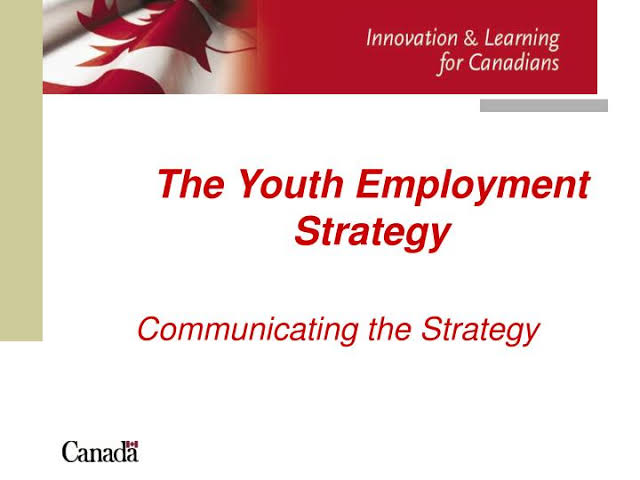In recent years, youth employment in Canada has faced significant challenges. Economic shifts, the rise of automation, and disruptions from global events such as the COVID-19 pandemic and post-pandemic recovery efforts have left many young Canadians struggling to find stable, meaningful work.
By July 2025, the Canadian government has recognized that addressing youth unemployment and underemployment is crucial not only for the well-being of young people but also for the long-term growth and competitiveness of the national economy.
In response, Canada has rolled out a new, multi-faceted strategy aimed at creating more accessible, inclusive, and sustainable employment opportunities for youth across the country.
Focus on Skills for the Future
One of the central pillars of Canada’s new youth employment strategy is the focus on equipping young people with future-ready skills. With the job market evolving rapidly due to artificial intelligence, green technology, and digital transformation, traditional education alone is no longer sufficient.
As of 2025, federal programs are emphasizing digital literacy, coding, cybersecurity, AI literacy, and green energy skills. Through collaborations with educational institutions, Canada is investing in modernizing curricula and integrating practical, career-focused training at both secondary and post-secondary levels.
Additionally, micro-credentialing programs have become more popular, allowing young Canadians to gain industry-relevant skills through short, targeted online or in-person courses.
Expanding Paid Work Experience Opportunities
Lack of work experience continues to be a major barrier for youth entering the workforce. In 2025, the Canadian government is expanding paid internship and co-op programs through new federal partnerships with private companies, nonprofits, and government agencies.
The Youth Employment and Skills Strategy (YESS) has been revamped to include more placements that are better aligned with high-demand sectors. This includes healthcare, clean tech, fintech, and creative industries.
Young workers are now being supported through more flexible employment models that recognize the importance of part-time and remote work. This shift ensures inclusivity for students, caregivers, and people with disabilities.
Boosting Support for Underrepresented Groups
Recognizing the barriers faced by Indigenous youth, racialized communities, newcomers, and young people living with disabilities, the 2025 youth employment strategy includes dedicated support for equity-deserving groups.
New grant programs and wage subsidies are being offered to employers who commit to inclusive hiring practices and diversity training. Community organizations also play a key role in delivering culturally relevant training and job placement services.
Programs such as the Indigenous Skills and Employment Training (ISET) initiative have been expanded in 2025 to provide tailored supports, helping young Indigenous Canadians access sustainable employment while respecting their cultural and geographic realities.
Enhancing Entrepreneurship and Innovation
To foster independence and innovation, Canada’s new youth employment strategy also encourages entrepreneurship among young Canadians. The federal government, through agencies like Futurpreneur Canada, has increased funding for startup mentorship, business planning assistance, and low-interest loans.
In 2025, a new program called the Young Innovators Launchpad (YIL) supports youth-led start-ups in emerging sectors like renewable energy, virtual reality, biotechnology, and creative tech.
Entrepreneurship is also being promoted in rural and remote communities, helping young people start businesses in areas with fewer traditional employment options, thus revitalizing local economies.
Investment in Mental Health and Job Readiness
Canada’s strategy acknowledges that job readiness is not just about resumes and interviews—it also includes mental health, confidence, and soft skills. As of July 2025, there is greater investment in wraparound services such as career counselling, peer mentorship, and mental health support.
The updated YESS model integrates mental wellness into all stages of employment programming. Community centers, schools, and employment hubs are offering workshops on stress management, goal setting, and dealing with job-related anxiety.
This holistic approach ensures that young Canadians are emotionally and psychologically prepared for the demands of the workplace, increasing their chances of success and long-term retention.
Strengthening Public-Private Partnerships
The new employment strategy emphasizes collaboration between government, business, and nonprofit sectors. To this end, public-private partnerships have been formalized to bridge the gap between education and employment.
Large Canadian companies are now working with federal and provincial authorities to identify skill shortages and co-design programs that directly train youth for in-demand roles. Some of these include apprenticeships, mentorships, and fast-track hiring pipelines.
In 2025, tech giants, construction firms, and clean energy startups are leading the way in adopting this collaborative model. This ensures that training aligns with real job market needs and helps reduce youth unemployment figures nationwide.
Digital Platforms and Job Matching Services
Recognizing the importance of technology in job search and recruitment, the Canadian government has also launched a new AI-powered digital platform called YouthPathway. This service matches job seekers with relevant opportunities based on their skills, location, and preferences.
As of July 2025, YouthPathway integrates resources like resume-building tools, virtual interviews, and personalized coaching. Employers can also post job openings and access government incentives for hiring young workers.
This platform improves accessibility, especially for youth in rural or underserved areas who may not have access to large job fairs or career centres.
Climate Jobs and the Green Economy
Canada’s youth strategy also aligns with the country’s long-term climate goals. Young people are being trained for “green jobs” in areas like sustainable construction, environmental monitoring, and clean energy production.
The Green Youth Corps, a newly expanded program in 2025, offers work placements and mentorship in sustainability-focused roles. It not only helps reduce youth unemployment but also builds a workforce ready to tackle environmental challenges.
By connecting climate action with youth employment, Canada is shaping a future where economic development and environmental responsibility go hand in hand.
Conclusion: Building a Youth-Centered Workforce for the Future
Canada’s new strategy for youth employment reflects a forward-thinking, inclusive approach to economic development. By focusing on future-ready skills, paid experience, mental health, entrepreneurship, and climate opportunities, the country is building a workforce that is resilient, skilled, and diverse.
As of July 2025, the early impacts of this strategy are already visible. More youth are participating in the workforce, fewer are unemployed or underemployed, and employers are benefiting from a more prepared and dynamic talent pool.
With continued investment and cross-sector collaboration, Canada is well on its way to creating a youth-centered employment ecosystem—one that not only supports young people but empowers them to lead the nation’s growth in the decades to come.



